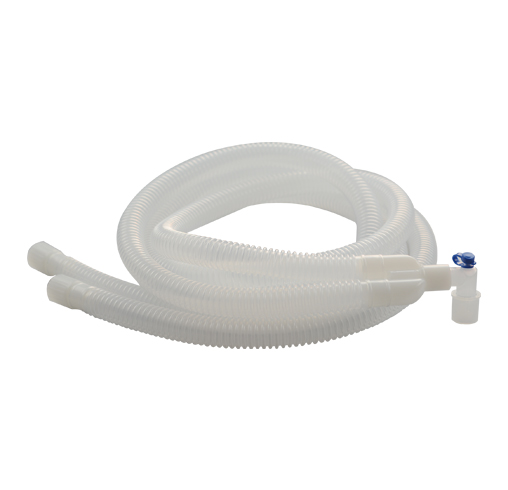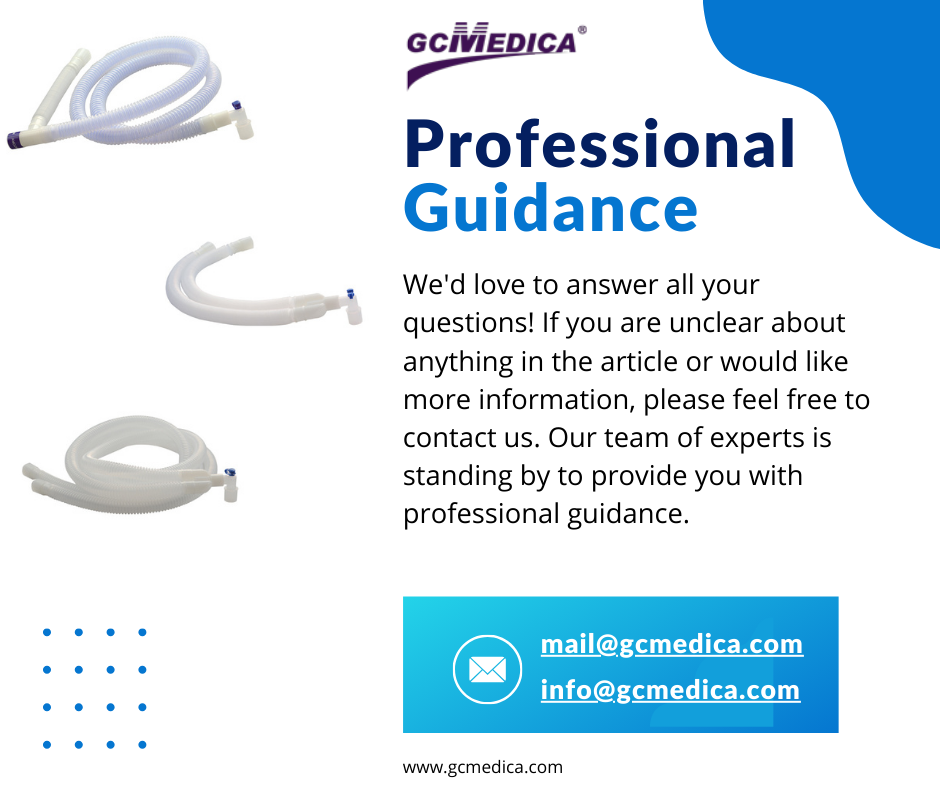Breathing Circuits in Anaesthesia: A Comprehensive Overview
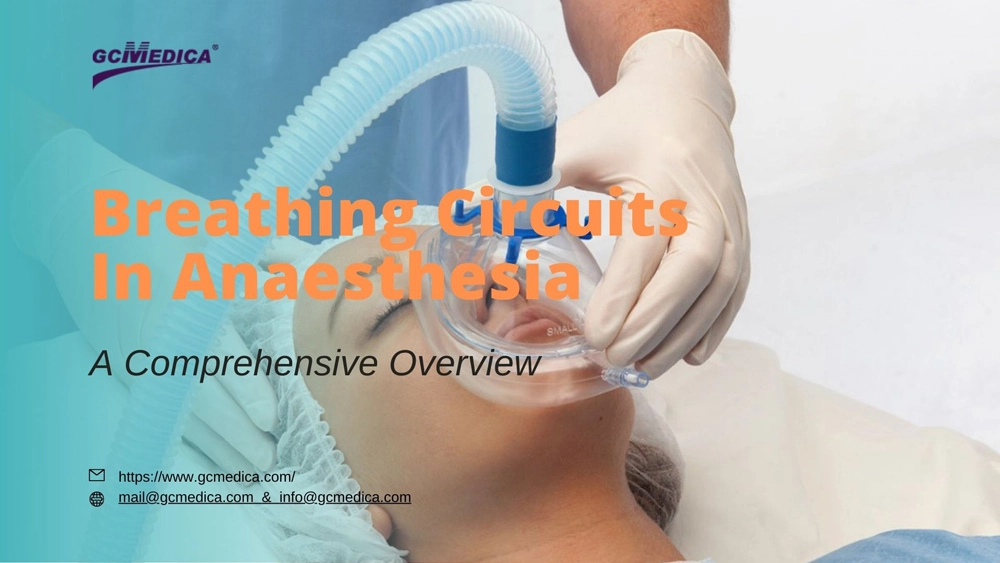
1.Introduction
Breathing circuits form the backbone of anaesthesia delivery systems, serving as the critical link between the anaesthesia machine and the patient. These assemblies are designed to safely and efficiently transport anaesthetic gases to the patient while removing carbon dioxide. Their significance in anaesthetic practice cannot be overstated; they ensure patient safety, facilitate effective gas delivery, and allow for precise control over anaesthesia levels.
The development of breathing circuits has been a journey marked by innovation and necessity. Initially rudimentary in design, they evolved from simple open systems to the sophisticated closed-circuit systems we see today. This progression mirrors the advancements in surgical techniques and anaesthesia itself, reflecting a continual quest for improved patient safety and better outcomes.
Breathing circuits, therefore, are not just equipment but pivotal elements in the history of anaesthesia, shaping how surgeries are conducted. Their evolution reflects our growing understanding of patient physiology and the complexities of anaesthetic management. Each advancement in their design has brought us closer to the ideal of safer, more effective surgical care.
2.Types of Breathing Circuits
How do different breathing circuits cater to varied clinical needs in anaesthesia? The versatility of breathing circuits is evident in their types, each designed with specific functionalities to meet diverse clinical requirements.
1.Corrugated Breathing Circuit: Known for its flexibility and durability, this type is commonly used. It consists of corrugated tubes, allowing for easy manipulation and positioning.
2.Expandable Breathing Circuit: Characterized by its lightweight and compact design, this circuit is ideal for limited space scenarios. Its expandable nature ensures efficient gas flow and is often preferred in pediatric settings.
3.Coaxial Breathing Circuit: Unique for its 'tube within a tube' design, the coaxial circuit minimizes heat and moisture loss. It's particularly advantageous in long surgeries to maintain patient stability.
| Image | Circuit Type | Advantages | Clinical Use Cases |
| Flexible, Durable | General Surgery | |
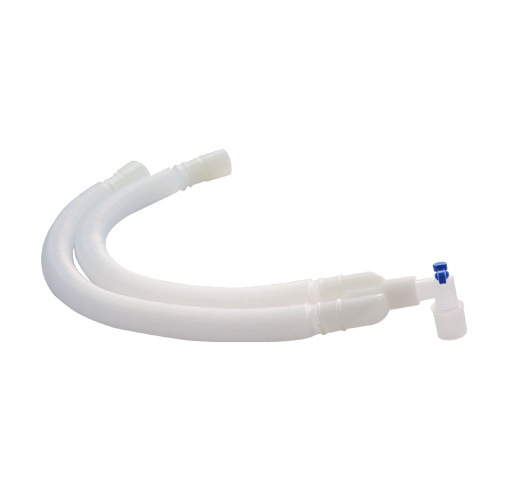 | Lightweight, Space-efficient | Pediatrics, Outpatient Surgery | |
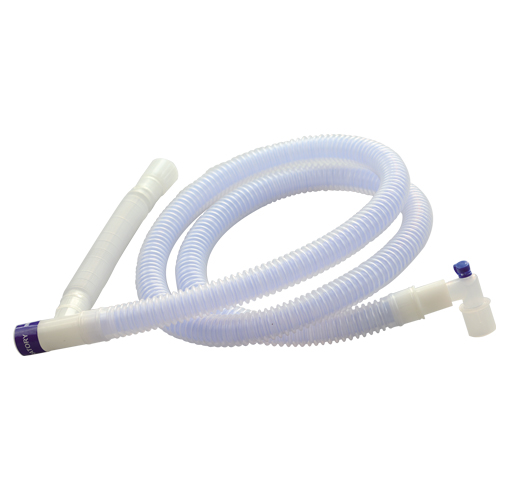 | Minimizes heat loss | Long-duration Surgeries |
Each type of breathing circuit brings its unique set of benefits to the operating table, allowing anesthesiologists to tailor their approach to the patient's needs and the surgical environment.
3.Components of Breathing Circuits
What makes up a breathing circuit, and why is each component crucial? Understanding the components of breathing circuits is essential for effective use and maintenance in anesthesia.
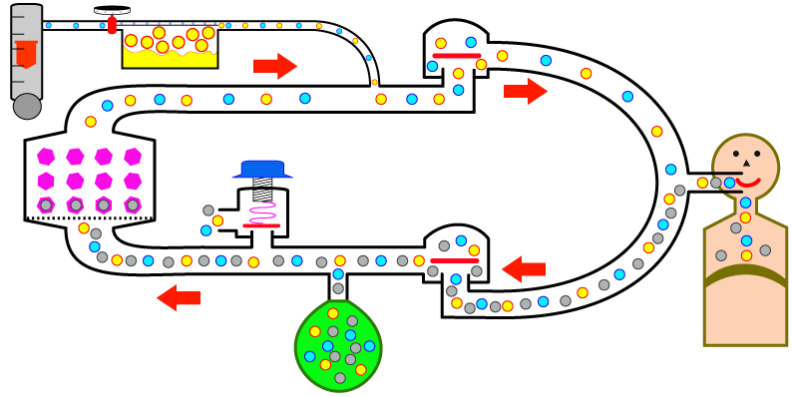
How anesthesia circle breathing systems work explained simply
Tubes: The backbone of the circuit, tubes transport gas to and from the patient. Their flexibility allows for patient movement and adjustments during surgery.
Valves: These regulate the flow of gases and ensure unidirectional movement, preventing exhaled gases from re-entering the system.
Filters: Critical for hygiene, filters remove bacteria and viruses from the gases, reducing the risk of infection.
Connectors:These join various parts of the circuit, ensuring a secure and leak-free pathway for gas delivery.
Reservoir Bags: These allow for the monitoring of breathing patterns and manual ventilation if needed.
Maintaining these components involves regular checks for wear and tear, ensuring they are properly connected and functioning, and replacing any parts that show signs of damage. Filters, due to their role in infection control, require particular attention and should be replaced as per the manufacturer’s guidelines or hospital protocols. Proper maintenance not only ensures patient safety but also extends the lifespan of the equipment, making it a critical aspect of anesthesia management.
4.Mechanism of Action
The functionality of breathing circuits in anaesthesia is a marvel of medical engineering, balancing the need for effective anaesthetic delivery with critical patient ventilation.
Breathing circuits operate by creating a controlled path for anaesthetic gases to travel from the machine to the patient. They maintain a steady flow, ensuring that the patient receives a consistent and precise mixture of oxygen and anaesthetic agents. The valves within the circuit play a pivotal role here, directing the flow of gases and preventing any exhaled gases from re-entering the system.
The role of breathing circuits in patient ventilation and gas exchange is equally important. They facilitate the removal of carbon dioxide from the patient’s exhaled air and replenish the oxygen, maintaining an optimal balance necessary for patient safety during surgery.
Moreover, these circuits allow anesthesiologists to fine-tune the depth of anaesthesia. By adjusting the concentration of anaesthetic agents and the volume of gases administered, they can precisely control the level of unconsciousness, ensuring the patient remains stable and responsive to surgical needs.
In essence, breathing circuits are the unsung heroes in the operating room, seamlessly integrating safety, precision, and control in anaesthetic management.
5.Safety and Risk Management
What are the risks associated with breathing circuits, and how can they be effectively managed? While breathing circuits are indispensable in anaesthesia, they come with inherent risks that require diligent management.
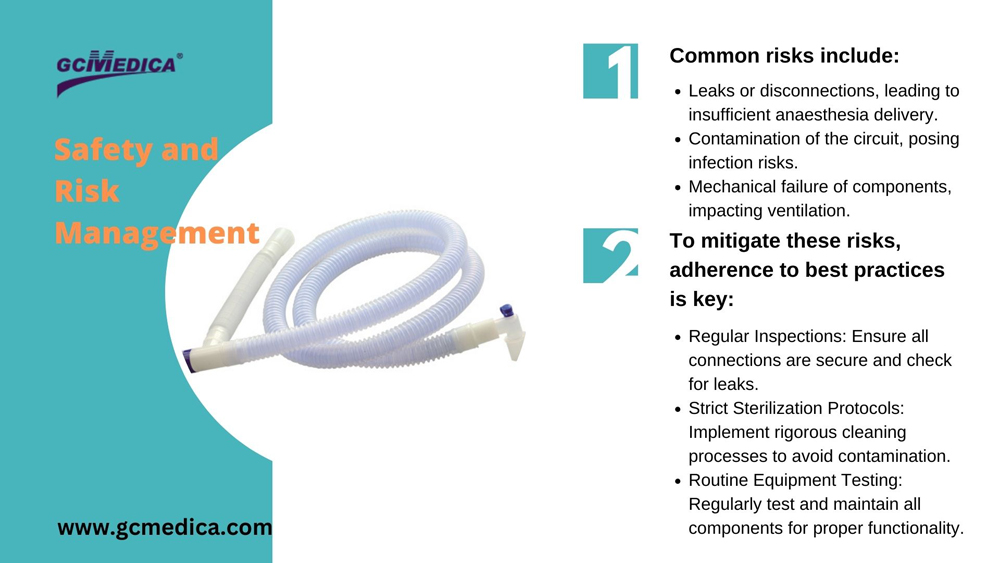
Common risks include:
Leaks or disconnections, leading to insufficient anaesthesia delivery.
Contamination of the circuit, posing infection risks.
Mechanical failure of components, impacting ventilation.
To mitigate these risks, adherence to best practices is key:
Regular Inspections: Ensure all connections are secure and check for leaks.
Strict Sterilization Protocols: Implement rigorous cleaning processes to avoid contamination.
Routine Equipment Testing: Regularly test and maintain all components for proper functionality.
Modern breathing circuits are equipped with advanced safety features:
Pressure Alarms: Alert in case of leaks or disconnections.
HEPA Filters: Provide high-efficiency particulate air filtration.
Automated Monitoring Systems: Continuously monitor patient breathing and circuit integrity.
| Risk Factor | Mitigation Strategy | Modern Safety Feature |
| Leaks/Disconnections | Regular Inspections | Pressure Alarms |
| Contamination | Strict Sterilization | HEPA Filters |
| Mechanical Failure | Routine Equipment Testing | Automated Monitoring Systems |
By combining these strategies with the latest safety features, the risks associated with breathing circuits can be significantly reduced, ensuring a safer anaesthesia experience for patients.
6.Innovations and Technological Advancements
The field of anaesthesia has witnessed significant advancements in breathing circuits, tailoring them to the unique needs of various surgical procedures and patient demographics.
Customization for different surgeries involves designing circuits that adapt to the specific requirements of the procedure. For instance, minimal flow systems are being developed for surgeries where space and efficiency are paramount.
Addressing the needs of special patient groups like paediatrics and geriatrics has led to the creation of circuits that are more sensitive to their unique physiological requirements. Pediatric circuits are designed to minimize dead space and reduce the risk of lung overdistention, while geriatric circuits focus on gentle ventilation to accommodate for reduced lung elasticity.
Case studies illustrate these advancements vividly. For example, in a pediatric cardiac surgery, a specially designed circuit ensured minimal blood gas fluctuations, leading to a more stable intraoperative period. Similarly, in a geriatric hip replacement surgery, the use of a low-flow circuit with careful humidity control reduced the patient's risk of hypothermia and postoperative pulmonary complications.
These innovations not only exemplify the technological progress in breathing circuits but also underscore the commitment to patient-specific care in anaesthesia.
7.Conclusion
This article has highlighted breathing circuits in anaesthesia indispensable role in modern medical practice. From the variety of circuits available, each tailored for specific surgical needs, to the intricate components that ensure safe and effective anaesthesia delivery, breathing circuits are more than mere medical tools; they are lifelines in the operating room.
Their evolution, marked by technological advancements, reflects a deepening understanding of patient care. Innovations aimed at different patient demographics and surgical requirements underscore this commitment. Additionally, the growing focus on environmental sustainability in their design and use points towards a future where medical efficacy and ecological responsibility go hand in hand.
In summary, breathing circuits in anaesthesia are not just evolving as medical devices but are also adapting to the broader changes in healthcare priorities, from patient-specific treatments to environmental consciousness, paving the way for a more advanced and responsible medical future.


